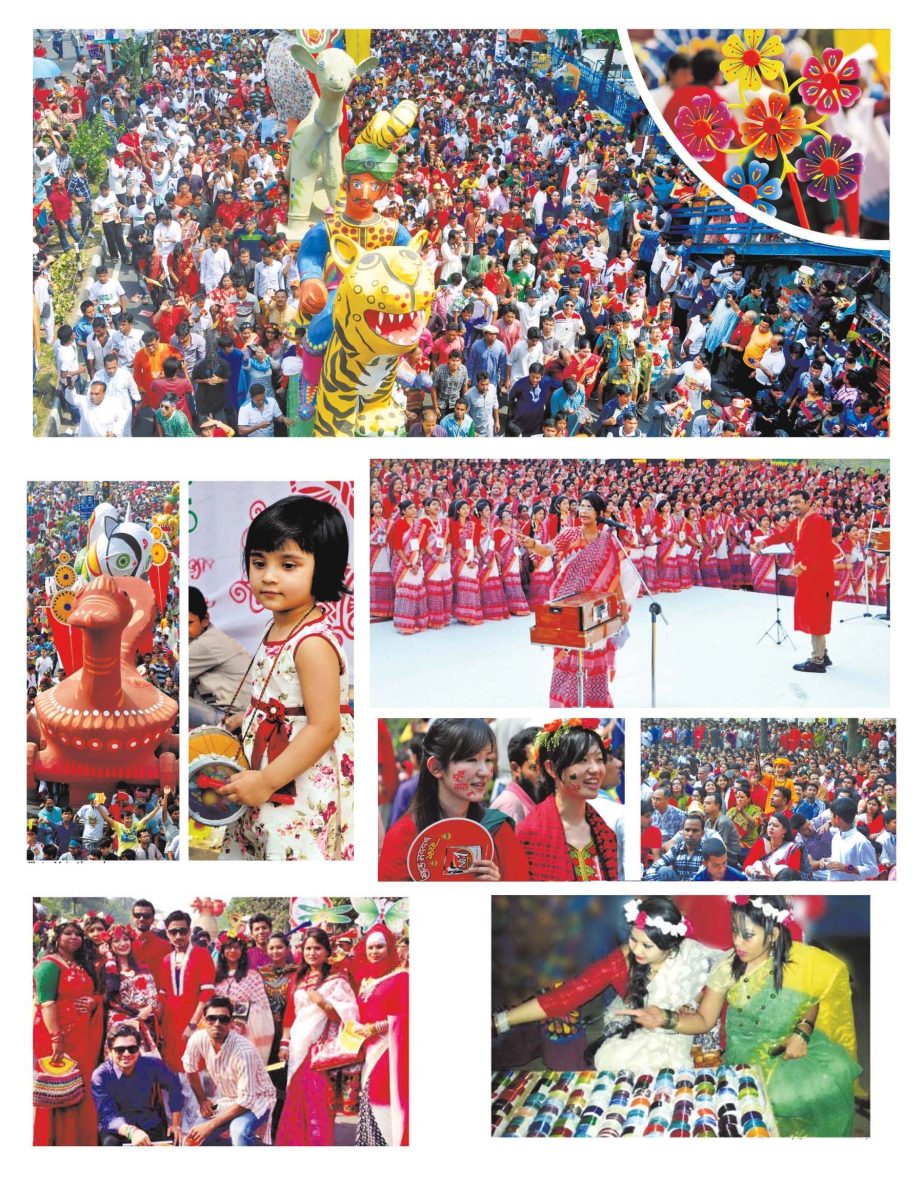
Societal Events Report :Pahela Boishakh, the first day of Bangla calendar, was celebrated on April 14 amid much fanfare, festivity and gaiety across the country under tight security cover. True to the centuries-old tradition, people from all walks of life gathered at different popular and historic spots in the capital and elsewhere across the country to hail the Bangla New Year 1421 with new hopes and aspirations for a better, peaceful year. The celebration of Pahela Boishakh has become an integral part of Bangla culture since it began over six centuries back. Traders and shopkeepers across the country opened Halkhata (new book of accounts) and entertained customers and visitors with sweets on the first day of the New Year as part of the tradition and culture. On every return of Pahela Boishakh, the first day of Bangla year also the country’s biggest cultural festival, people of all walks of life, especially the youths, come out on the roads at daybreak wearing traditional dresses to celebrate the day. Thousands of people thronged traditional venues at different parts of the capital, including Ramna Park, Suhrawardy Udyan, Central Shaheed Minar, Dhaka University, Shahbagh, Dhanmondi Lake, National Zoo, Botanical garden, Manik Miah Avenue and Hatirjheel areas, to welcome the New Year amid pageantry. The most colourful celebration of the Bangla New Year was held at the Ramna Batamul at dawn with an elaborate programme undertaken by Chhayanaut, a leading cultural troupe. Artistes from Chhayanaut welcomed the day with Tagore’s famous song Esho hey Boishakh, esho, esho under the banyan tree at the Ramna Park. Students of the Faculty of Fine Arts of Dhaka University, wearing colourful masks, took out a Mongal Shobhajatra, procession of good wishes, in the morning as part of the carnival. Men, wearing panjabi-pyjama while women, attired in sari with red borders, and children in colourful dresses thronged traditional Boishakhi Mela (fair) and other cultural functions. People partook of Panta Bhat (watery rice) with fried hilsa, lentils, green chilli and onions at home, restaurants and fairs following the rich tradition of Bangla culture. Though the observance of Pahela Boishakh has become popular in cities, but New Year festivities are deeply linked with the rural Bangladesh. People in villages take bath early in the morning and, clad in fine clothes, went to visit relatives, friends and neighbours. They also visited different Boishakhi fairs arranged in many parts of the country. Bangla Academy, Shilpakala Academy and Nazrul Institute organised separate cultural programmes to welcome the New Year. n

